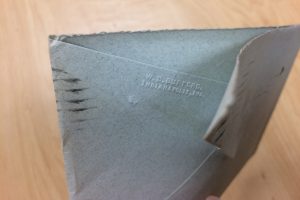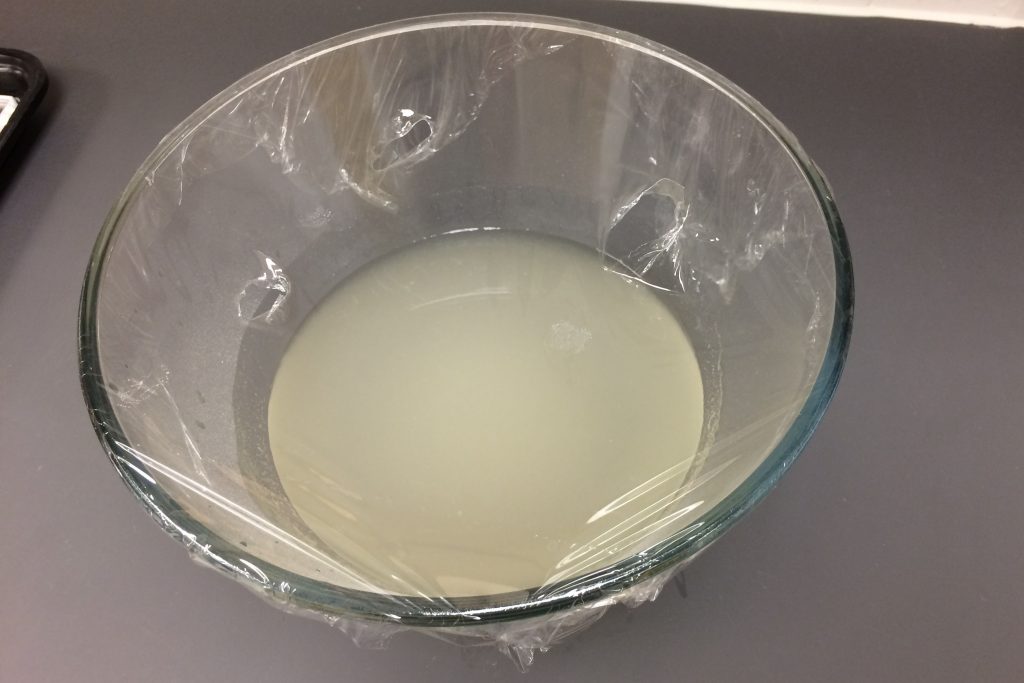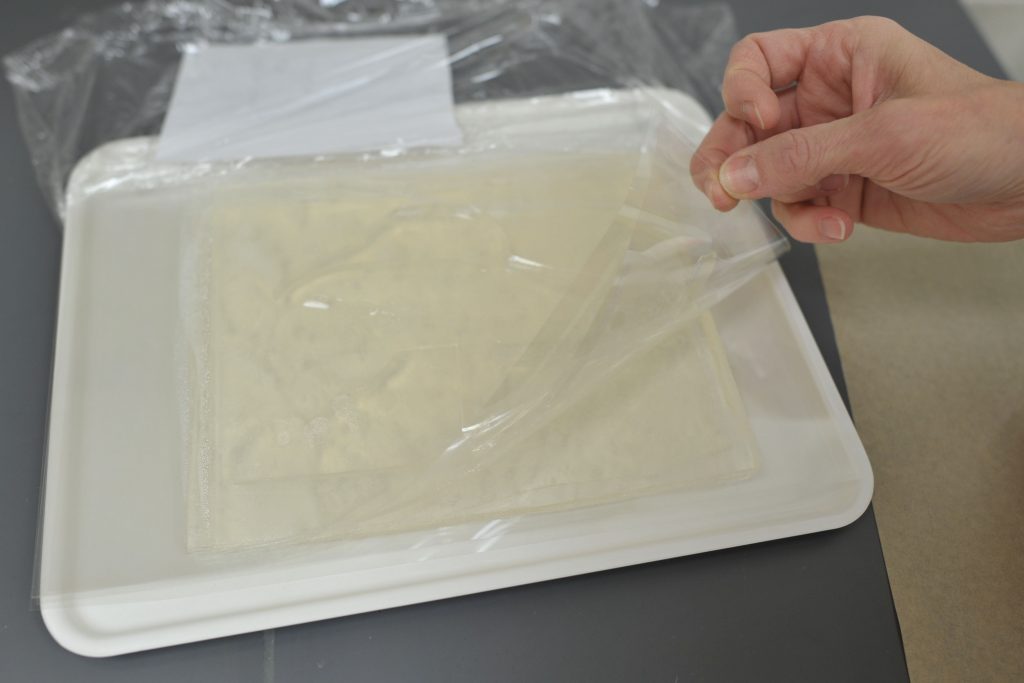By Susan Russick, Special Collections Conservator
Water in. Water out. Half of what we do in conservation is adding and removing water. We use a wet adhesive to mend a torn document but not so much water that the paper cockles. We add humidity to relax and flatten a rolled poster and let it dry pressed between blotters. We add water to remove old adhesives, but can get into trouble if the residues sink into the paper. We must have twenty ways to add water to an object. Gellan gum is my new favorite.
Gellan gum, a substance derived from bacteria on waterlily leaves, was introduced to the conservation community around 2007, but I had never used it until attending a 2016 workshop taught jointly by the Canadian Conservation Institute (CCI) and Libraries and Archives Canada.
Since bringing the recipe and techniques back to Northwestern’s conservation lab, we have been exploring more uses. With a material this versatile, we knew that other conservators in our area would be interested in learning and sharing, as well.
Northwestern University Libraries’ conservation lab held a small workshop on gellan gum in conservation on November 3, 2017. After an introductory slide show, a roundtable format was used to allow book and paper conservators from the Chicago area to share information and experiences on this new tool in conservation. Because gellan gum is so new to the field of conservation, some of the guest conservators attending had never used it. The hands-on component of the workshop began with making gellan gum.
Basic Gellan Gum – 2% Concentration
1 L of water
0.4 g of calcium acetate monohydrate
20 g of gellan gum powder
- Using a 2 L glass container, mix water and calcium acetate.
- Add gellan gum gradually while whisking to create a homogenous mixture.
- Cover with plastic wrap and heat in microwave until entire mixture is clear and bubbling – about 10 minutes. Small holes may be poked in the plastic wrap. Complete hydration occurs at 75-100 degrees Celsius.
- Quickly pour into a heat resistant tray and leave to set and cool – about 30 minutes.
- Store extra gel layered between sheets of polyester film or plastic wrap, refrigerated, for up to two weeks.
Note: I usually prefer a 3% concentration. It is made the same way with 1 L of water and 0.4 g of calcium acetate, but with 30 g of gellan gum.
Treatments
The remainder of the workshop was spent exploring the uses of gellan gum and sharing our tips and techniques. It was a pleasure to spend the time working with colleagues from the area as well as investigating new ways of adding a very controlled amount of moisture to objects.
Please note: No accessioned objects were injured during this class. Deaccessioned stunt doubles were used. A couple of the slides below do include actual objects as exemplars. All of these treatments have significant risks to objects that a conservator needs to balance with the possible benefits.
Releasing old adhesives – An envelope flap was opened without damaging the embossed maker’s mark under the adhesive.

Removing highlighter pen – A water-soluble yellow highlighter pen was almost completely removed. Yellow components of the orange and green highlighter were also removed.


Reactivating adhesive precoated tissues – Repair tissues that had previously been coated with water-soluble adhesive mixture were reactivated without becoming too wet.


Flattening – After brief contact with gellan gum, local creases can be flattened.

Washing – the object is sandwiched between two layers of gellan gum. The degradation products seep into the gum and discolor it. This advanced treatment has major risks.


The workshop was a great opportunity to work with colleagues and share tips and tricks.









